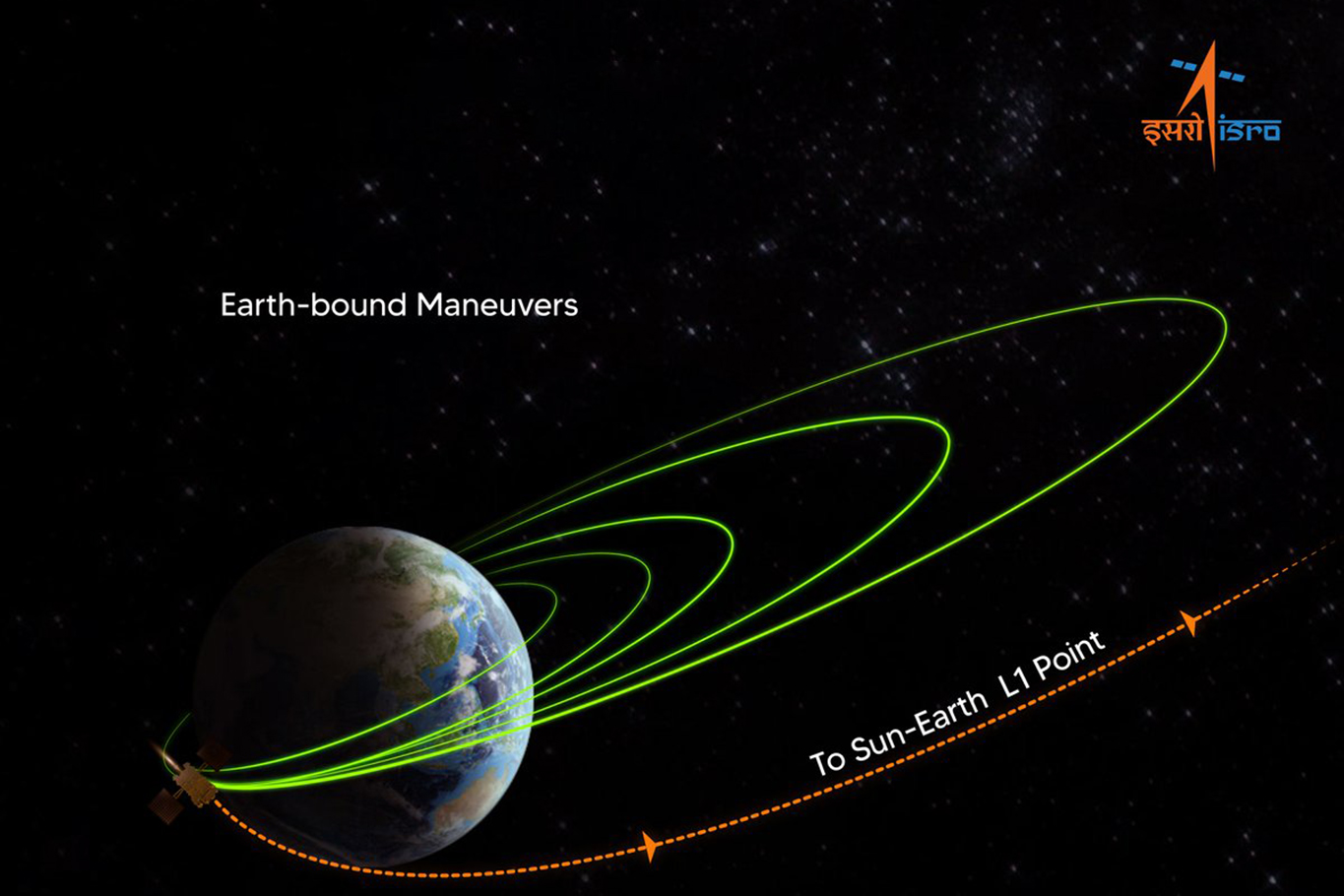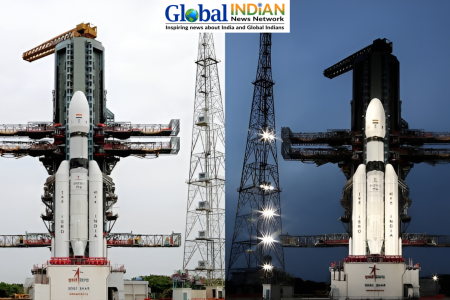
India’s inaugural space-based solar observatory, Aditya-L1, has initiated its journey to the Lagrangian 1 (L1) point through the Trans-Lagrangian 1 Insertion (TL1I) maneuver executed by ISRO on September 19.
This milestone maneuver signifies the commencement of Aditya-L1’s 110-day voyage toward the L1 point, positioned between the Earth and the Sun, approximately 1.5 million km away, representing a mere 1% of the Earth-Sun distance.
ISRO announced the successful execution of the TL1I maneuver with excitement, stating that the spacecraft is now on a trajectory bound for the Sun-Earth L1 point. It will be placed in orbit around L1 via another maneuver approximately 110 days from now. This achievement marks the fifth consecutive successful transfer of an object by ISRO towards a celestial body or space location.
Aditya-L1 was launched on September 2 using the Polar Satellite Launch Vehicle (PSLV) from the Satish Dhawan Space Centre in Sriharikota. Following the launch, it undertook four earth-bound maneuvers between September 3 and September 15.
Dedicated to comprehensive Sun research, Aditya-L1 carries seven payloads, five of which were developed by ISRO and two in collaboration with Indian academic institutes.
Upon reaching the L1 point in January 2024, another maneuver will tether Aditya-L1 into an orbit around L1, where it will carry out its mission orbiting in an irregularly shaped path perpendicular to the Earth-Sun line.
With a mission life of five years, Aditya-L1’s payloads are expected to provide crucial data on various solar phenomena, including coronal heating, coronal mass ejections, space weather dynamics, and particle and field propagation.
ISRO has reported the initiation of scientific data collection by the Supra Thermal and Energetic Particle Spectrometer (STEPS) instrument, part of the Aditya Solar Wind Particle EXperiment (ASPEX) payload. STEPS, consisting of six sensors, has been collecting data on particles ranging from 20 keV/nucleon to 5 MeV/nucleon, as well as electrons exceeding 1 MeV. This data aids in analyzing particle behavior within Earth’s magnetic field.
STEPS began its operations at a distance exceeding 50,000 km from Earth, well beyond the radiation belt region. Each STEPS unit is operating within normal parameters and will continue data collection during the Aditya-L1 mission’s cruise phase and its intended orbit around L1.
The Physical Research Laboratory (PRL) created STEPS with assistance from Ahmedabad’s Space Application Centre (SAC).













